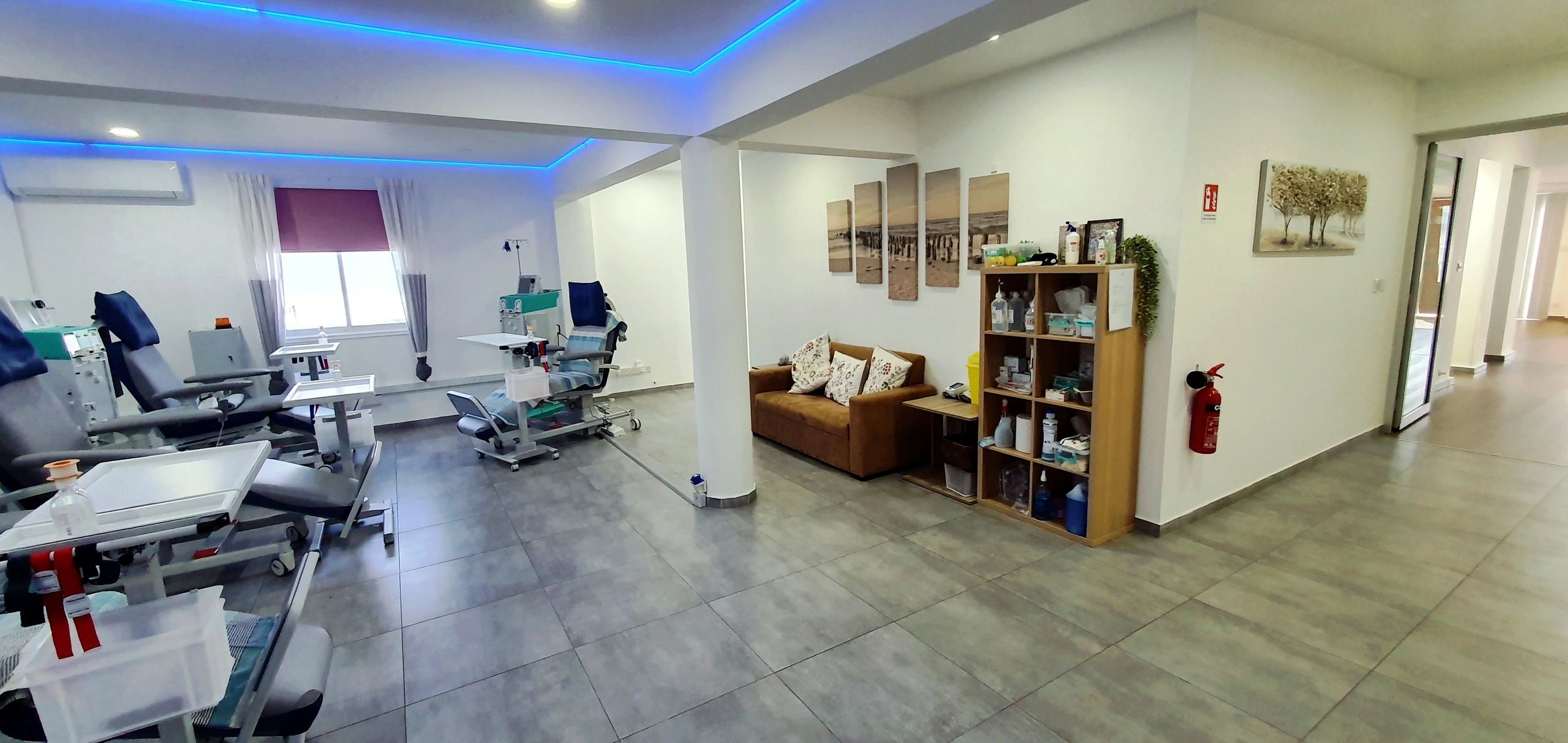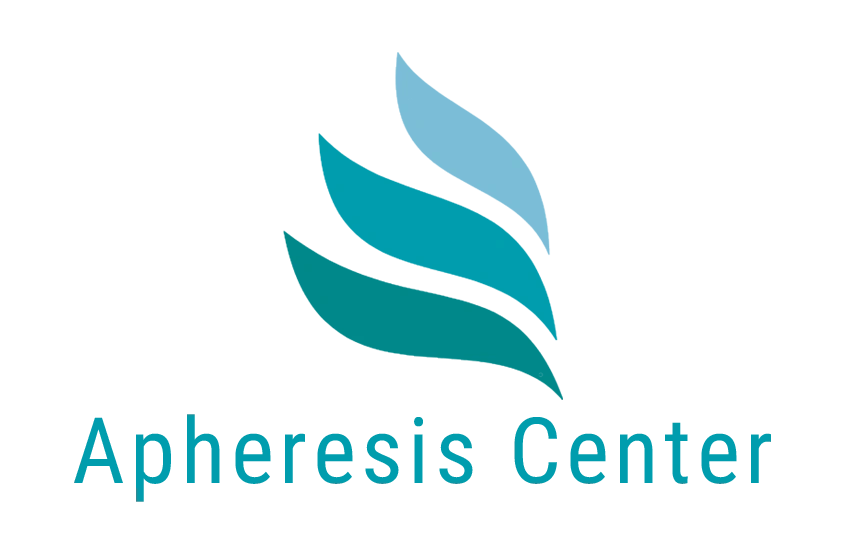
H.E.L.P. Apheresis Therapy: The Ideal Treatment for Post-Covid, Long Covid, Post-Vac Syndrome and Chronic Illnesses
Enjoy Restored Health. Reduce the Effects of Long Covid and Chronic Illness.
Human blood acts as a delivery and clean-up team at the same time. It delivers helpful nutrients and oxygen where needed. Yet it also removes waste, fights infections, forms clots and keeps the body temperature steady. Give your body, health and blood a renewed lease on life with H.E.L.P. Apheresis. This specialised blood cleansing and filtration treatment gently removes harmful spike proteins, inflammation and microclots from your blood. It is highly effective as a post-Covid inflammation treatment that allows your body to heal naturally.
What you get when you choose our treatment centre:
- A combination therapy approach with personalised therapy timelines
- Relief from: chronic fatigue syndrome, brain fog, pain, lower inflammation and more
- Full preventative diagnostics
- Immune recalibration and post-infection baseline resetting
- Performance and cellular recovery support
- Options to integrate IV nutrients, Whole Body Hyperthermia and clinical health coaching
- The safety of a science-backed technique and research/data-driven protocols
- Personalised care from top European-trained medical experts
- A convenient location at our Long Covid treatment centre in Cyprus
- Support for caregivers and travel logistics
What Is H.E.L.P. Apheresis Therapy?
Suffering from Long Covid, Post-Covid, Post-Vac Syndrome or a chronic illness? Therapeutic Apheresis can help. H.E.L.P. Apheresis (Heparin-induced Extracorporeal LDL Precipitation) is a specialised form of plasma exchange (plasmapheresis).
Also known as extracorporeal blood cleansing, or blood cleansing that takes place outside the body, this blood plasma treatment removes harmful cells, chemicals and disease-forming proteins from your blood.
Examples include LDL or “bad” cholesterol, lipoproteins, fibrinogen, triglycerides and inflammatory substances such as cytokines. Highly effective as a Long Covid cure and many others, LDL Apheresis is your chance to enjoy restored health and wellness once again.
Conditions Effectively Treated by the H.E.L.P. Apheresis Procedure
Apheresis therapy is the trusted choice for a series of diseases. This chronic illness therapy helps adults and adolescents with:
- Post-Covid
- Long Covid treatment
- Post-Vaccine Syndrome treatment
- Autoimmune conditions
- EM/SFC
- Maladie de Lyme
- Fibromyalgie
- Sclérose en plaques
- Lupus
- POTS
- MCAS
Additionally, the sophisticated Apheresis procedure at our clinic alleviates symptoms such as:
- Chronic fatigue syndrome
- Brouillard cérébral
- Chronic pain
- Microcirculation issues
- And many others
Key Benefits of Therapeutic Apheresis Treatment
There are so many therapeutic Apheresis benefits, ranging from inflammation removal to spike protein removal. But there’s much more! The treatment also assists by:
- Effectively removing inflammation and cytokines
- Filtering spike proteins and viruses
- Safely dissolving microclots as a sound microclot treatment
- Enhancing blood flow by 20%, reducing blood viscosity by 10%
- Removing cholesterol and harmful autoantibodies
If you are seeking integrative, biologically driven diagnostics and therapies, H.E.L.P. Apheresis is the ideal solution.
How Does the H.E.L.P. Apheresis Treatment Work?
Our minimally invasive procedure involves just four simple steps. Here’s our quick and easy step-by-step guide of what to expect:
- Our expert team will set you up comfortably and gently draw blood from your vein.
- Plasma is then separated and treated with heparin to bind pathogens and assist with heparin adsorption.
- Pathogens are removed and plasma pH is restored.
- The plasma exchange takes place and purified plasma is returned to your body.
What to Expect During Your Therapeutic Apheresis Treatment
Here’s what you can expect from our professionals, from start to finish:
- Initial free consultation to assess suitability
- Diagnostic tests to confirm microclots, inflammation, vascular issues, spike protein persistence and autoimmune profiling
- A personalised treatment plan which consists of a series of 5-8 sessions over 3–5 weeks
- Ongoing lab testing to track efficacy
- Integrated care with IV, nutrition, pacing and health coaching
Why Choose Our Apheresis Clinic in Cyprus?
Our Apheresis clinic in Cyprus is a state-of-the-art facility with sophisticated equipment to help restore your health and blood circulatory system. But we offer a whole lot more! With us, you get:
- An expert medical team
- Multilingual support
- A comfortable and accessible Long Covid treatment clinic in Larnaca, Cyprus
- Extensive, professional experience in chronic illness management
Patient Testimonials and Real Stories
Edward Nicol, Écosse, Lyme, Babesia, Long Covid
After several weeks, Eddie left our island without any results or benefit of the treatments (Combination Therapy with H.E.L.P. Apheresis) and both the team and him were devastated. But then shortly after he arrived home, day by day, he started to get better in small incremental steps until 3 months later he now is almost symptom free! Sometimes recovery takes time, patience and trust as he says. And Eddie is not the only patient with a recovery timeline like that – very often it takes weeks and months so the gradual improvements add up to a bigger result and benefit.
Arthur Ferencei, Royaume-Uni, Long Covid
Avant son séjour au centre d'aphérèse, il traversait une véritable crise d'identité car il n'était plus en mesure d'étudier.
The great news – he is back to being a MIT student – Grade A again!
Krisztina Koncsek, Hongrie, Post Vac et Long Covid
3 semaines après sa vaccination, Krisztina a eu une syncope pendant une séance de tennis. Il n'y a pas eu de traumatisme cardiaque aigu, mais après plusieurs examens, une cardiomyopathie a été diagnostiquée. Après avoir semblé se rétablir en partie, elle a développé un POTS, de la fatigue et de légers symptômes gastro-intestinaux.
Après deux infections au Covid, sa situation s'est aggravée avec une fatigue sévère et un POTS sévère, ses problèmes d'histamine ont commencé et l'apparition d'engourdissements et de maux de tête a fait son apparition.
En octobre 2023, elle s'est retrouvée alitée d'un jour à l'autre, avec une très grande fatigue, des insomnies, des douleurs gastro-intestinales, des douleurs à l'estomac, des symptômes semblables à ceux de la neuropathie et des sensations d'inflammation. Ses médecins traitants ont déclaré qu'il s'agissait d'un problème psychologique, car tous ses examens de laboratoire se sont révélés corrects.
When she arrived the last week of May at the Apheresis Center, she had 35 (!) severe symptoms. Today, beginning of July there are almost no symptoms left, with moderate MCAS being the main symptom to work on. During the video she surprised Markus – she is moving to Cyprus in October – being sunlight-tolerant again after treatment will definitely help there!
Marko Zivanovic, Serbie, Long Covid
Marko parle de son expérience à Chypre, dans notre clinique de Larnaca, de l'aide que lui a apportée Dianna pour le transport et l'hébergement, et des avantages qu'il a trouvés à être traité sur notre île. En ajoutant l'hyperthermie du corps entier et des protocoles nutraceutiques (Senolytica et Antivirals) à ses traitements d'aphérèse H.E.L.P. , nous avons cherché à réduire le coût et la durée (10 jours seulement !) de son traitement. Cette expérience fonctionnera-t-elle ? L'avenir nous le dira lorsque nous nous entretiendrons avec Marko dans quelques mois, nous pourrions alors disposer d'une ébauche pour de futures études de cas. Nous avons obtenu quelques premiers résultats, mais il est encore trop tôt pour tirer des conclusions significatives.
Donna Picton, Australie, Long Covid
Fatigue, Post Excertional Malaise, Brainfog, Tinnitus, MCAS, Anxiety, Persisting EBV to just name a few of the symptoms that brought her to our clinic. On 3rd of November 2023 Donna started her therapy course at our Apheresis Center in Larnaca, Cyprus, on 28th December 2023 she said: ‘I am fully cured, no longer have Long Covid and am back to 100%’. What we called ‘unicorns’ back in 2021 and 2022, we see now more and more often – Combination Therapy with H.E.L.P. Apheresis is fully curative for a substantial group/subset of Long Covid and Post Vac sufferers.
Here short testimonial ‘2 minutes about 2 months that reversed 2 years: Cured from Long Covid through H.E.L.P. Apheresis and Combination Therapy’ you find further below
Marko Zivanovic, Serbie, Long Covid
Anna came to our clinic in August 2023. She was not sure if she would be a patient who would respond to treatment as she had had post-viral MECFS for 11 years and no treatment had worked before. Now, half a year later, she is living a completely different life – she can sit as long as she likes, stand as long as she likes, do as much housework as she likes, no more stairs that cause her to collapse for days.
La nouvelle force de ses pieds et le fait qu'ils ne soient plus bleus l'étonnent encore chaque jour.
Vous trouverez ci-dessous la version intégrale de sa vidéo
And here you find a short 3 minutes video in German for all German speakers
Scientifically Proven and Recommended by Experts
Not only does our medical team operate under Cyprus’s Ministry of Health regulatory framework but the clinic partners with certified German Apheresis laboratories and uses CE-marked Class IIb medical devices, such as the Plasauto Sigma and Medica LifeSep® systems.
Furthermore, diagnostic testing is carried out in collaboration with certified European laboratories with ISO 15189 accreditation for immunological, microclot and inflammatory testing. Additionally, our clinic fully adheres to European treatment protocols for therapeutic Apheresis and immune modulation.
We also have a team of highly qualified physicians, registered nurses, clinical nutritionists and more to ensure your health and safety.
Looking for more specific scientific validation? Numerous research studies and clinical evidence distinctly prove the health advantages of H.E.L.P. Apheresis. Explore some of these as part of conference or scientific journal publications below:
- ISFA 2023 (Conférence mondiale de la Société internationale d'aphérèse)
- Diagnostic et traitement des maladies infectieuses de Gavin
- Portail de la recherche
- Springer
- Frontières
- ScienceDirect
- Aphérèse thérapeutique et dialyse
- Journal de la thrombose et de l'hémostase
- Springer Nature
- The American Journal of Medicine (en anglais)
- PubMedCentral
- La science
Also read what our medical experts have to say:
“H.E.L.P. Apheresis is the most powerful treatment of the [Long Covid or Post-Vac Syndrome] condition so far, from everything we have… [And] adding combination therapy, we are seeing better results and faster improvements.” — Dr Irina Pavlik Marangos“[The H.E.L.P. Apheresis] machine exists for almost 40 years. We traditionally used them to treat high-risk patients with coronary heart disease who have suffered several myocardial infarctions or being heart transplanted. [The machines] remove excess damaging stuff from the blood and they do it in a harmonised manner so it does no harm to the patients.” — Dr Beate Jaeger
How Safe Is H.E.L.P. Apheresis?
Have questions about Apheresis safety records or you’re concerned about possible side effects? Rest assured that our professional team takes patient safety very seriously and is something we always prioritise.
In fact, with more than 500,000 treatments that are highly documented over a period of several decades, you’re in safe and highly capable hands.
When it comes to potential side effects, we’re transparent and have noted some patients experiencing mild symptoms such as minor bruising, possible fatigue, low blood pressure or temporary electrolyte imbalances.
However, severe complications are extremely rare due to the closed-loop Apheresis cleansing and filtration system and we are confident that you’ll feel great in just a few sessions.
Costs and Financial Support
The treatment cost for our H.E.L.P. Apheresis therapy is €1,685 per session. Some of our patients choose to have their health insurance provider reimburse them for the costs.
Naturally, this will depend on which country you are from and which service provider you use. However, with our team at your disposal, you’ll receive comprehensive assistance with documentation and more.
Frequently Asked Questions
Please email us at info@apheresiscenter.eu if you cannot find an answer to your question
Therapeutic Apheresis removes harmful components from your plasma such as fibrinogen, LDL cholesterol, inflammatory cytokines, immune complexes, microclots and, in some cases, autoantibodies. This helps reduce inflammation, improve circulation and lower immune dysregulation.
Some patients report noticeable improvements after just one to two sessions, especially in symptoms like brain fog, breathlessness, circulation and fatigue. For others, it may take four to six sessions to observe significant and sustained benefits.
H.E.L.P. Apheresis specifically targets inflammatory and pro-thrombotic substances without removing all plasma proteins or relying on donor replacement fluids. It filters blood with heparin-induced precipitation, making it more precise, less taxing and more effective for conditions like Long Covid and autoimmune inflammation. Read more on our blog about how different Apheresis types compare.
Yes, patients with blood pressure issues can typically receive treatment, but it is closely monitored. Our medical team adjusts protocols, hydration and infusion rates accordingly to ensure stability before, during and after the session.
We treat adults and occasionally adolescents based on thorough case assessment. There is a minimum weight of 30kg+, but younger patients are reviewed on a case-by-case basis with parental consent and paediatrician collaboration.
Most patients undergo a core protocol of five to eight sessions, typically at two per week. Your exact plan is tailored to your diagnostic profile and response to the treatment.
The duration of a treatment session depends on the therapy. For example, H.E.L.P. Apheresis can last from 2.5 to 3 hours, Inuspheresis or Immunoadsorption can last from 3 to 4 hours and IV Therapy can proceed for 45 minutes up to 1.5 hours. Factors that affect the duration include symptom severity, treatment type and whether combination protocols are used.
The treatment is minimally invasive. It involves an IV cannula (or catheter in some cases), and patients are monitored throughout. Some experience slight chills or tiredness afterward, but serious discomfort is rare.
Yes. It’s part of our Combination Therapy Protocol, which often includes IV nutrients, hyperthermia, immunoabsorption, nutraceuticals and medication support. Treatments are safely sequenced and adapted to your lab results.
As with any blood filtration therapy, there are minor risks such as bruising, fatigue, low blood pressure or temporary electrolyte imbalances. Severe complications are extremely rare due to the closed-loop and heparin-based system of H.E.L.P. Apheresis.
It depends on your country and provider. We assist patients with detailed documentation to support insurance reimbursement requests.
Recovery usually involves gentle pacing, hydration, light nutrition and supportive coaching. Our health coaching and nutrition team provides post-session strategies to stabilise and sustain your improvements.
Featured in Trusted Media
Documentaire d'ARTE TV 'Long Covid - Healing in Cyprus' sur notre centre d'aphérèse
Le documentaire a été diffusé en juin 2024. Une équipe de journalistes de la chaîne de télévision européenne ARTE TV a accompagné trois de nos patients atteints de Long Covid et de Post Vac Syndrom et les a interviewés, ainsi que notre équipe au Centre d'aphérèse. Vous pouvez regarder ici un extrait du documentaire qui est également facile à regarder pour les patients souffrant de dysfonctionnement cognitif, de brainfog et de migraines associées. Audio en anglais par Dubly.
Depuis le tournage du documentaire, de nouvelles découvertes scientifiques ont été faites. Vous pouvez trouver les dernières études publiées ici.
Markus a publié un billet de blog icioù il décrit les développements et les mises à jour depuis le tournage du documentaire.
ITV News, BBC News, France 2 et WDR TV. Extraits de quelques-uns des derniers reportages sur notre centre d'aphérèse et H.E.L.P. Aphérèse pour les maladies chroniques, les syndromes post-vaccinaux et les maladies post-longues.
Vejon International Expert Conference – Hidden Drivers of Post Covid Dysfunction
Notre cofondateur Markus Klotz a pris la parole lors d'une table ronde très intéressante sur l'impact durable de COVID - en se penchant sur les dysfonctionnements persistants du système immunitaire, du microbiome, des mitochondries et de la coagulation.
Pour la première fois, certains des plus grands scientifiques, cliniciens et chercheurs du monde ont été réunis pour explorer les facteurs cachés à l'origine du Long COVID et des syndromes post-vaccinaux. Le Dr Philip McMillan était l'hôte de cet événement. Comme nous, il est convaincu que nous sommes confrontés à une crise médicale complexe et évolutive qui exige un dialogue ouvert, une science rigoureuse et, surtout, une collaboration. Ce que vous allez lire et voir est une synthèse puissante de discussions en panel et d'un échange en table ronde qui approfondit les mécanismes de la persistance des protéines de pointe, du dysfonctionnement mitochondrial, des anomalies de la coagulation et de l'effondrement du microbiome. Pour en savoir plus, consultez notre blog
CGTN Europe TV – ‘What causes Long Covid?’ featuring H.E.L.P. Apheresis and Combination Therapy
What causes Long Covid (and how to treat it). Excerpts from CGTN Europe’s latest Razor report featuring H.E.L.P. Apheresis, Combination Therapy and our Medical Advisor and Researcher Dr. Beate Jaeger with simple footnotes for those that suffer from brainfog/cognitive dysfunction.
Source : cgtn.com

